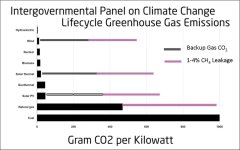lpetrich
Contributor
World’s Largest Solar Energy Project Will Also Be Its Cheapest | Greentech Media
2.2 Gigawatt Solar Park In India’s Rajasthan State Now Fully Operational | CleanTechnica
Size Matters: Energy Storage Scales Up To Beat Down Fossil Fuels
So nice to see.Abu Dhabi has set a global record-low solar price as authorities confirmed the winning bid in a 2-gigawatt tender. Upon its expected completion in mid-2022, it is slated to be the largest single-site solar energy project in the world.
The Al Dhafra project had five bidders, with the lowest offer coming in at 1.35 U.S. cents per kilowatt-hour.
...
There are numerous factors behind the ever-lower prices for solar in the Middle East, including great solar resources, large and flat sites, cheap-to-zero land costs, massive scale, and the cheap finance that comes with a 30-year PPA with a petrostate as the offtaker.
2.2 Gigawatt Solar Park In India’s Rajasthan State Now Fully Operational | CleanTechnica
Size Matters: Energy Storage Scales Up To Beat Down Fossil Fuels
Everybody knows that coal is on the way out, but the latest electricity report from BloombergNEF is something of a shocker. It casts a shadow of gloom over natural gas, too. Low-cost renewables are creeping into gas territory, helped along by falling costs for energy storage. In fact, according to BNEF, energy storage is now a cheaper alternative to building new gas “peaker” plants in some regions. And by some they mean Europe, which was supposed to be a lifeline for US gas exporters.
...
According to the US Energy Information Agency, by July 0f 2019, the US had become the third-largest LNG exporter in the world, surpassed only by Australia and Qatar.

